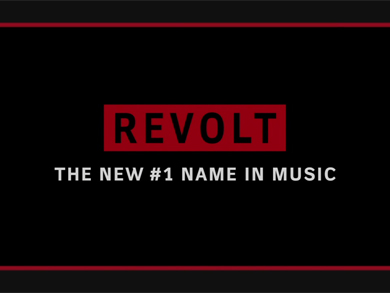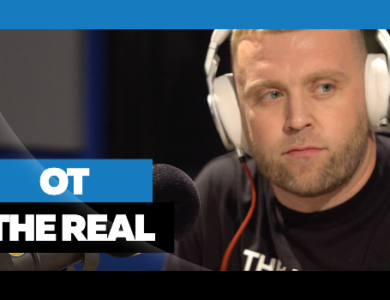
Rough right. The internet keeps people connected and makes our lives easier in many ways. Shoot paying bills alone, I never needed a stamp to pay a bill. Well check out this story on the Navajo Nation, a Native American community which has yet to embrace the digital age.
+TatWZA
X
Shotta Dru on Google+
Like many college students, Wilhelmina Tsosie must go online to complete her assignments. But unlike the vast majority of Americans, she finds that the biggest challenge in her coursework is merely getting connected.
Tsosie is a member of the Navajo Nation, the Native American community whose sprawling reservation has long been isolated from the rest of the country — an isolation now being reinforced by the digital age.
On a recent night, she endured a 30-mile drive along a dark desert highway to reach this town, her nearest access point to the Internet. She carried her laptop into a hotel that offers wireless access. In the dim light of the lobby, she hunched over the screen and finished an online exam.
Like many Navajos, Tsosie, a petite 34-year-old with glasses and a jet-black ponytail, can’t receive basic Internet service at home, because her home is too remote. She and her husband and their two young children live near the peak of a tree-covered mountain, beyond the reach of Internet service providers, forcing her to drive long distances to get online.
This has never been easy, consuming time as well as gas money. Now, with local gas prices nearing $4 a gallon, Tsosie can no longer afford frequent trips to reach the Internet. She worries about the effects on her grades. Last semester, she failed a class after missing too many assignments — the result of unreliable web access, she says.
“If I passed that class, I would have been on time for graduating,” Tsosie said. “I would have had one semester left and now I have two.”
Her husband, Ben, said the long journeys to find an Internet connection have begun to feel “hopeless.”
“Sometimes we don’t have the gas money to go 30 miles to get on the Internet,” he said.
Tsosie’s dilemma reflects the extreme difficulties many Navajos confront in seeking to connect with the rest of the world. Some park on the side of highways, climb atop roofs, or drive to the peaks of mountains just to get within range of mobile telephone service. Others travel dozens of miles to use Wi-Fi hotspots outside hotels, restaurants and chapter houses — the local community centers on the reservation. Some who lack electricity run their computers on gas-powered generators.
Native Americans have long experienced disconnection from the rest of the country — their reservations are generally placed on remote lands with little economic potential, separated from modern-day markets for goods, as well as higher education and health care. The dawn of the Internet was supposed to bridge this gap, according to the promises of prominent public officials. Fiber optics cables along with satellite and wireless links would deliver the benefits of modernity to reservations, helping lift Native American communities out of isolation and poverty. But the rise of the web as an essential platform in American life has instead reinforced the distance for the simple reason that most Native Americans have little access to the online world.
Less than 10 percent of homes on tribal lands have broadband Internet service — a rate that is lower than in some developing countries. By contrast, more than half of African Americans and Hispanics and about three-fourths of whites have high-speed access at home, according to the Department of Commerce.
Without reliable access to the Internet, many Native Americans find themselves increasingly isolated, missing out on opportunities to secure jobs, gain degrees through online classes, reach health care practitioners, and even preserve native languages and rituals with new applications that exploit the advantages of the web.
Sonny Clark, 59, who lives in the remote Navajo town of Crystal, N.M., must drive five miles up the Chuska Mountains to get a cellphone connection, and 30 miles to Window Rock — where he works for the tribal government — to get online. He goes to these lengths just to stay in touch with his children, who live out of state, trading emails and text messages.
“I’m in no-man’s land,” Clark said.
Far from an accident, this state of affairs is the result of decades of government policies and business decisions, which have combined to accelerate advanced telecommunications services in the most densely populated American communities, while largely ignoring Native American lands, experts say.
“Native Americans face an ever-increasing digital divide, because they have been purposefully discriminated against in the business models and rollouts of next-generation networks,” said Sascha Meinrath, director of the Open Technology Initiative at the New America Foundation, a public policy think tank. “These are places that have been systematically forgotten by society.”
A PRESIDENT’S VISIT
In April 2000, President Bill Clinton — who presided over the mass explosion of the web — visited the Navajo reservation to announce a new program aimed at bringing some of the benefits here.
During his visit, Clinton met a 13-year-old Navajo girl who had won an iMac computer in a contest, but lacked phone service in her home, making it impossible to connect to the Internet. He announced a new program that promised telephone service across the nation’s tribal lands for only a dollar a month, portraying the Internet as a transformative force.
“I am here because I believe the new technologies like the Internet and wireless communications can have an enormous, positive impact in the Navajo Nation,” Clinton said that day, addressing a crowd of some 25,000 people gathered in the Navajo town of Shiprock, N.M. “They can help you to leapfrog over some of the biggest hurdles to develop your economic and human potential.”
The Internet had already leapfrogged many hurdles elsewhere, spawning new industries such as e-commerce, while disrupting traditional business models. But it had yet to emerge here.
In 1995, while the Internet was in its infancy, a report from the federal Office of Technology Assessment issued a prescient warning of the looming digital divide. “Absent some kind of policy interventions, Native Americans are unlikely to catch up with, and probably will fall further behind, the majority of society with respect to telecommunications,” the report declared.
The following year, Congress passed the Telecommunications Act, a major overhaul that spurred considerable innovation and an outpouring of new businesses, from fiber optics companies that buried the cable for high-speed Internet links beneath every major city, to wireless providers that delivered the web to mobile devices. But the law did not address phone or Internet service on Native American reservations, serving as a missed opportunity that has kept these communities disconnected, experts say.
Then, in 2000, Clinton was here in the name of spurring development, declaring that the benefits of the web “can be the greatest equalizers our society has ever known.”
The audience to which Clinton addressed his words was in need of equalization. The Internet was merely the latest phase of telecommunications to bypass the Navajo Nation and the broader Native American community. Less than 70 percent of Native Americans have even basic telephone service, compared with the national average of about 98 percent.
“By virtually any measure,” the Federal Communications Commission declared in 2000 — the same year that Clinton spoke — “communities on tribal lands have historically had less access to telecommunications services than any other segment of the population.”
The Navajos are particularly representative of this disconnect. The country’s largest tribal reservation, the Navajo Nation is home to about 170,000 people scattered across a vast desert punctuated by sandstone cliffs and flat-topped mountains, stretching across parts of Arizona, New Mexico and Utah. Many Navajos still herd sheep and cattle, heating their homes with wood-burning furnaces. Some live in trailers or traditional eight-sided homes called “hogans,” their front doors facing east to greet the rising sun. About 16,000 Navajo homes, or about 30 percent, have no electricity. Some lack running water.
Covering about 27,000 square miles, the Navajo Nation is roughly the size of West Virginia. That state — one of the nation’s poorest — has more than 18,000 miles of paved roads, as compared to the 2,000 miles that thread Navajo country. After heavy rain or snow, the reservation’s unpaved roads become impassable for days on end.
“The reservation is like 20 years behind the rest of the country,” said Barry Heifner, managing editor of the Gallup Independent, a daily newspaper on the reservation.
Largely disconnected from the rest of the American economy, Navajos have generally been denied a share of national prosperity. About 40 percent of Navajos live in poverty, and the median household income is just $24,000, according to Census data. Almost one quarter of Navajo people are unemployed — nearly triple the national rate. The high school graduation rate is about 30 percent. The death rate for diabetes among Navajos is three times the national average.
The Internet was supposed to lessen these problems, experts say. Navajo students could take online classes instead of having to travel long distances to attend school. Navajo patients could speak with doctors hundreds of miles away by videoconference. Navajo artisans could sell their famous handcrafted rugs online to customers around the world, bringing home income.
“The potential is staggering,” Clinton told the Navajo Nation. “We have to seize it.”
But more than a decade after Clinton’s visit, many Navajos are still waiting for the results. Only 40 percent of Navajo homes have even basic telephone service.
Check the rest of the story here.













